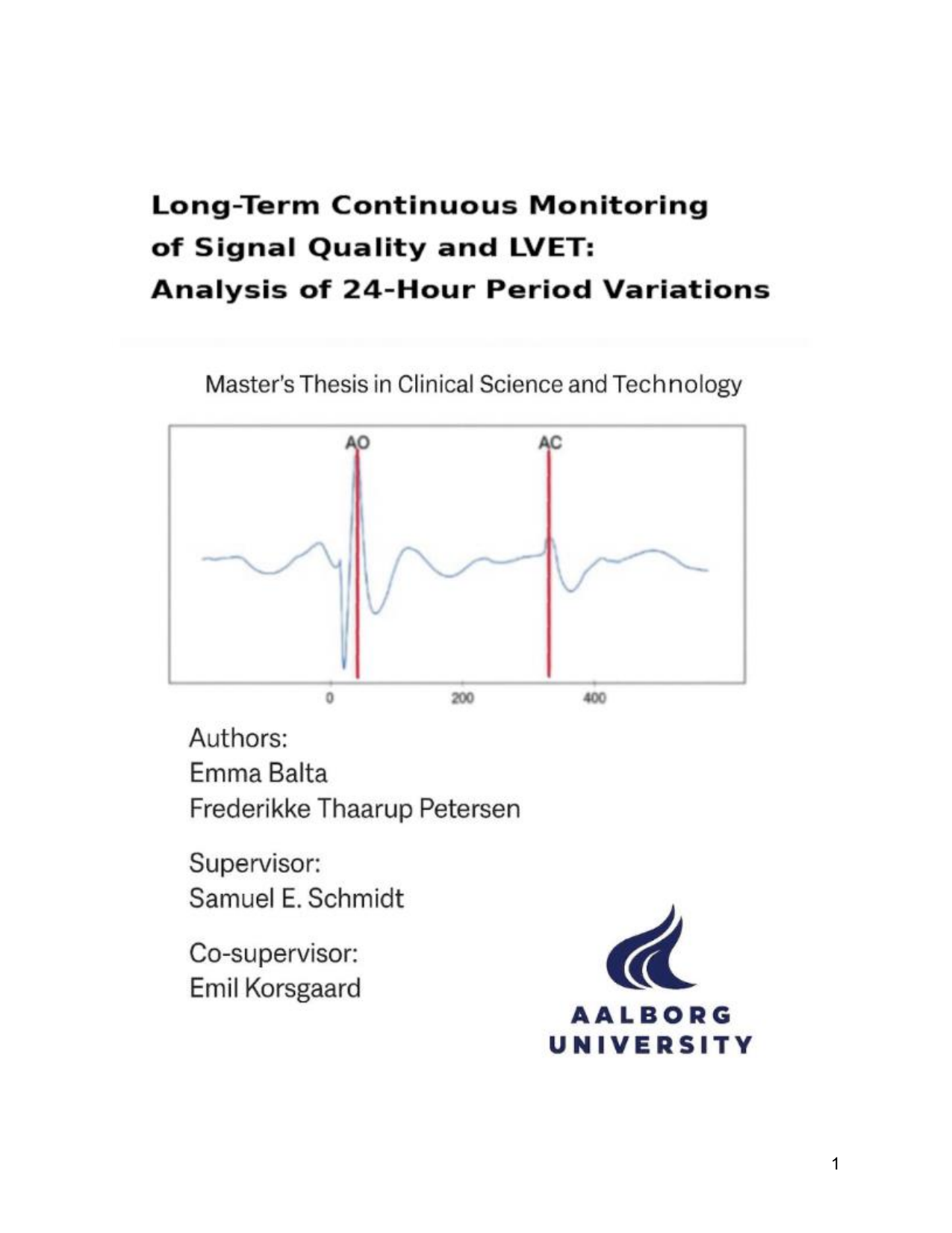
Long-Term Continuous Monitoring of Signal Quality and LVET: Analysis of 24-Hour Period Variations
Authors
Term
4. term
Education
Publication year
2025
Submitted on
2025-05-29
Pages
10
Abstract
Abstract: Background: Heart failure (HF) is a major public health challenge and a leading cause of hospitalization, particularly among the elderly. Telemedicine is a promising solution to alleviate the burden of HF. Additionally, limited research exists on the feasibility and signal quality of long-term recordings conducted in real-world, non-controlled environments, especially when using wearable technologies. This study aims to evaluate SCG signal quality and LVET variations recorded by the eMech sensor in real-world settings. Methods: Five healthy adults wore the eMech sensor to collect Seismocardiography (SCG) signals during real-world settings. A total of 150 signals per participant were targeted to represent full 24-hour period. Signal quality was manually assessed, and LVET was annotated. Time of day differences in signal quality were tested with Friedman and Wilcoxon signed-rank tests. LVET variability across day, evening, and night was analyzed using repeated measures ANOVA. Results: SCG signal quality varies by time of day. The highest proportion of good-quality signals appears to be recorded during the night, while a greater proportion of medium and poor quality signals are more commonly recorded during the day and evening. LVET was significantly longer at night (306.8ms) compared to the evening (269.5ms), while no significant differences were found between day and evening or between day and night. Conclusion: The study demonstrates that SCG signals can be reliably extracted in real-world settings. The quality assessment found that the recordings during the night appear to have the highest proportion of high quality signals. Additionally, the identified circadian variation in LVET across a 24-hour period highlights the importance of considering time of day variation when analyzing cardiac parameters.
Keywords
Documents
